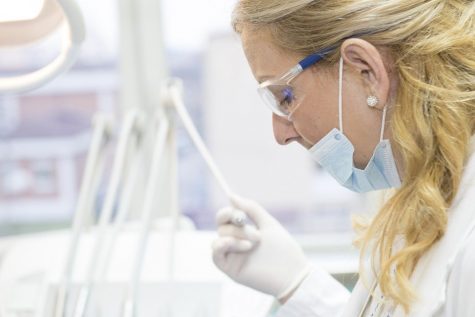Anatomy and Physiology II lab midterm: What to expect
Hello again, my dear readers–or the silent realm of my conscience should none of you really exist. As always, I sincerely hope that the semester is running smoothly for you and that you are unearthing some hidden gems along the way. Recently, I took my lab midterm exam for Human Anatomy and Physiology II, and I thought it would be helpful to share the general layout and expectations for the rest of you–should you take Dr. Zuiderveen at least, though I would imagine other CSU A&P professors arrange their exams similarly. So, if this is of interest to you, then continue onward!
For this exam, we started thirty minutes later than the usual lab time so that our professor had adequate time to set up the exam stations. If you’ve never been outside of a lab immediately before an examination, then let me tell you that it is quite an experience: a cluster of students filling the hall and benches directly in front of the door, clouding the air with nervous tension and anxiety as well as words like “sphyg-mo-man-o-meter” and “tensor fasciae latae.” Once permitted inside the lab–which for some of us became almost a mad dash to make it in before the others–we set our belongings, including any electronics (turned off of course), inside the cubbies lining the wall near the door. We then searched for the answer sheet marked with our name, which was located at a specific station, which if you remember my post on Holt’s A&P I midterm, is a little different (but in a good way) since we were assigned stations rather than scrambling to the one we preferred to start at. (This immensely relieved some stress for me since the decision of a station didn’t weigh heavy on me.)
Dr. Z. then started the exam by giving us instructions and regulations for the exam: proceed to your left, keep the question numbers in mind when answering and moving forward, wait for the full two minutes (and his verbal command) before moving on to the next station, and never look at the other stations or risk earning a zero since most stations had a fellow student at them. We also folded our answer sheets so that we could cover our answers and expose blank paper for any notes (or doodles) we wanted to scribble out. Tips already? Make sure that you write “LEFTS and RIGHTS” in as many places as possible on your paper to remind yourself to specify the side that the paired organs or structures are on the fetal pigs or models. Forget this, and you’ll only earn half credit for an otherwise correctly identified structure. Also, doodle or write on your paper if you have extra time at a station and are tempted to look at the others–or better yet, review your answers! Also, if you get stuck on a question, jot down notes about it and the slide, model, or subject that you’re looking at so that if you end up with extra time, you can return to it and answer when the answer–or a solid guess–surfaces.
Whereas the midterm for A&P I had about 60 questions total, this one had 80 counted questions plus three bonus questions. The bonus questions also counted two points each–so, worth about two full questions each. The numbers seem daunting at first, but the time truly flies by as you’re examining and answering the questions, and extra questions translate to more questions that you can risk missing while still managing the grade that you want. Overall, the examination period lasted a little over an hour, with each station containing three to five questions pertaining to fetal pig muscles, the endocrine and digestive systems (with microscope slides, human models, and fetal pig organs), the blood and heart (also with microscope slides, a sheep heart, and human models), and blood pulse and pressure. Another tip? Pay close attention to the wording of the questions–even a single word can alter what the question is asking for.
After the exam, some of us left while others stayed behind to discuss answers and determine ahead of time which ones we likely missed or got right. However, all of us breathed a sigh of relief that it was over–one lab exam down, with one more to go. For me, the satisfaction of finishing an exam never truly dawns until I receive my grade, but even then, I can admit that simply finishing an exam like that and feeling confident about at least most of my answers is gratifying despite any niggling doubts. And I hope that when you take the class, you can say the same. College requires patience since it involves long-term goals and gratification, but the short-term payoffs like doing well on an exam are one of the few shining rewards that we can clutch–and clutch them indeed! You worked for them!
If you ever want to know more about a class like A&P ahead of time, you can always contact the professors and arrange a meeting with them! Some may be willing to share details so that you can prepare for the class, but at the end of the day, if you are passionate about the material, no matter the amount of work, you’ll enjoy every hour that you spend studying it.
Stay strong and resilient, my friends.
Nursing students unite!





